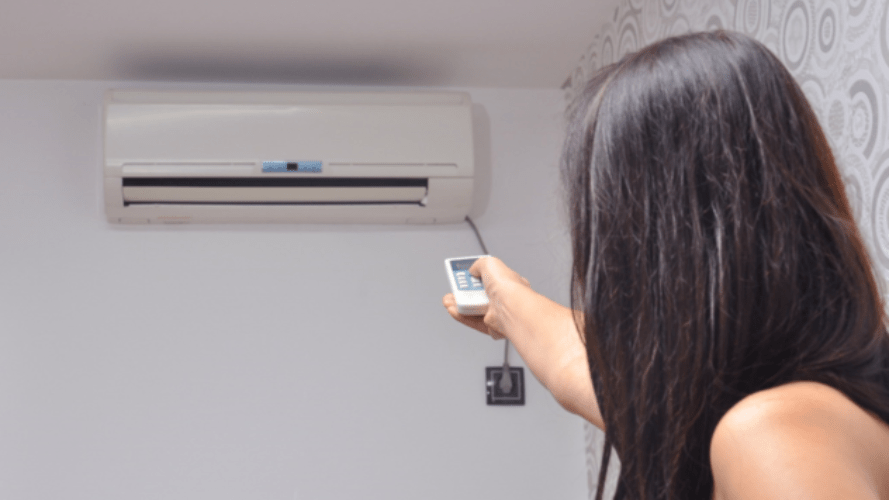For landlords, ensuring the safety and maintenance of their buy-to-let investment is paramount to keeping tenants safe and preventing property damage.
One such issue that can negatively affect your rental property – particularly an older period property – is damp and mould.
Damp and mould are a significant problem for UK households, with a YouGov poll commissioned by Safeguard Europe revealing that 51% of renters have experienced damp and mould in their homes.
A separate poll from the data company found that 20% of private and social renters in England suffer poor health because of the condition of their properties – with the most common elements including damp and mould.
With a clampdown on poor rental property conditions, revealed in the Government's recent Levelling Up White Paper, landlords must take preventative measures to keep damp at bay and guarantee their tenants' safety.
Damp and mould issues in rental properties
Damp has long affected thousands of homes across the UK and takes several different forms. These include penetrating damp, rising damp, condensation damp and construction damp.
In its basic form, condensation causes damp. When the temperature drops, condensation rises, creating moisture on windows, eventually leading to mould and damp.
Other causes of damp include leaking pipes, wastes and overflows. Rising damp – the rarest and most controversial form – comes up from the ground and is commonly caused by a damaged damp-proof course or no damp-proof course at all.
Damp doesn't discriminate and can present itself in various ways, including a musty smell, wall marks, lifting or peeling paper, cold walls, rotting wood and excessive condensation on windows.
This issue is prevalent in terraced houses, which account for most of the private rented sector. Some 43% of homes in Wales, 39% in Scotland and 35% in England were built pre-1919, meaning they're far more likely to have damp than modern homes built to different specifications.
What are landlords' responsibilities?
Once damp in a rental property has been diagnosed as a structural issue rather than a problem caused by the tenant's lifestyle, the landlord must handle it accordingly.
The Homes (Fitness for Human Habitation Act) 2018 requires landlords to provide a habitable home for tenants. Under the Act, damp and mould are included on the list of 29 hazards within the Housing Health & Safety Rating System (HHSRS).
The Act stipulates that if a property is suffering from damp caused by a structural fault, the landlord should fix the issue as soon as possible, with courts deciding how soon this should be done.
Any issues that directly affect a tenant's health or safety are typically expected to be remedied within a matter of days, with less urgent repairs expected to be carried out in 28 days.
However, suppose the damp is caused by condensation. It can be more challenging to determine whether that is down to a lack of ventilation in the property or the tenant's lifestyle (i.e., drying clothes indoors, failing to open windows or not using extractor fans).
For this reason, landlords should ensure rooms where damp and mould can form are fitted with extractor fans and encourage tenants to keep their homes adequately ventilated.
How can landlords and tenants keep damp at bay?
As a landlord, it is your legal responsibility and duty of care to your tenants to ensure your property is free of damp and mould.
The key to preventing damp is ensuring the property is well-maintained and well-ventilated. This involves opening windows in rooms where damp could easily fester, using extractor fans regularly, and fitting an extractor hood in the kitchen. Dehumidifiers can also help to regulate the humidity in the room.
You should ensure that the windows are clear of condensation and that the roof, guttering, and drains are all kept to standard – particularly after heavy bouts of rain, storms or snow.
However, if, despite your best efforts, damp, condensation, or mould do crop up in your rental property, you must act quickly. This means organising an inspection or survey and getting quotes to find the best deal.
Alternatively, consider appointing an independent damp specialist to assess your home. These specialists should be able to give you an unbiased opinion on what kind of remedial treatment is needed – which could set you back between £100 and £750.
Despite the potential high cost to fix, it's worth ensuring you're on the right side of the law. As damp and mould can reduce a property's value by thousands, tackling the problem at the earliest stage helps to ensure your investment isn't affected.
Enjoying our content?
Get the latest letting news, views and tips from HomeLet straight to your inbox.

